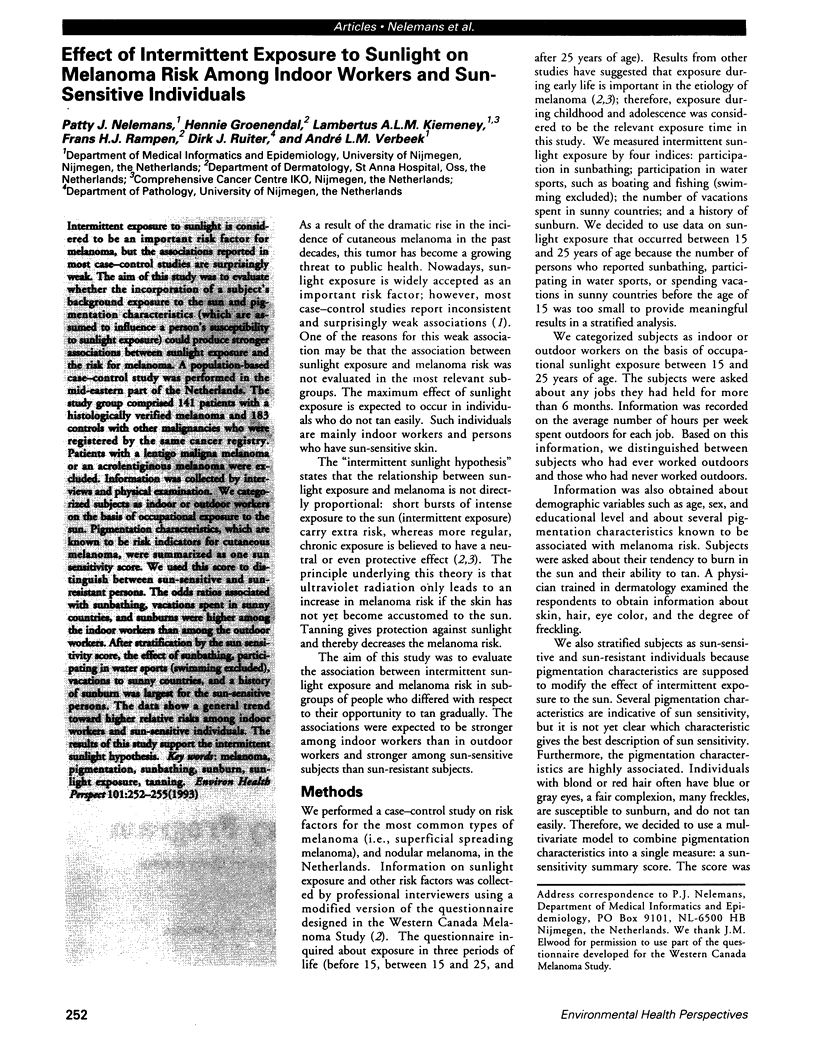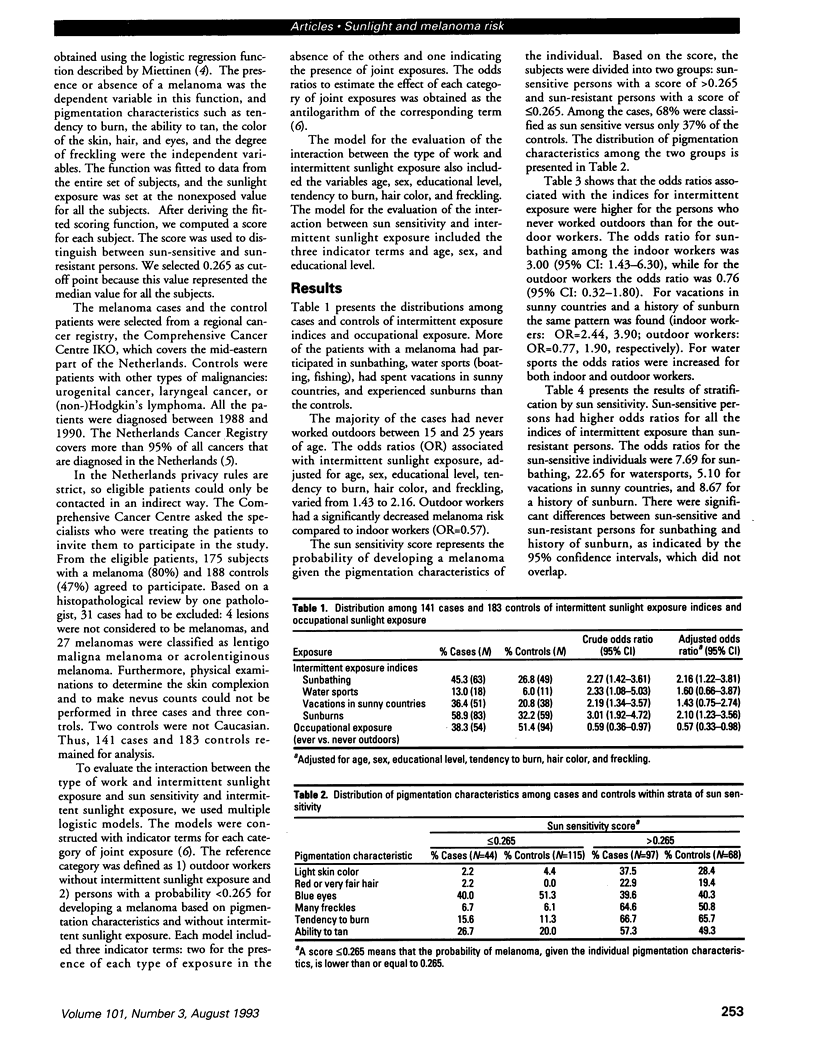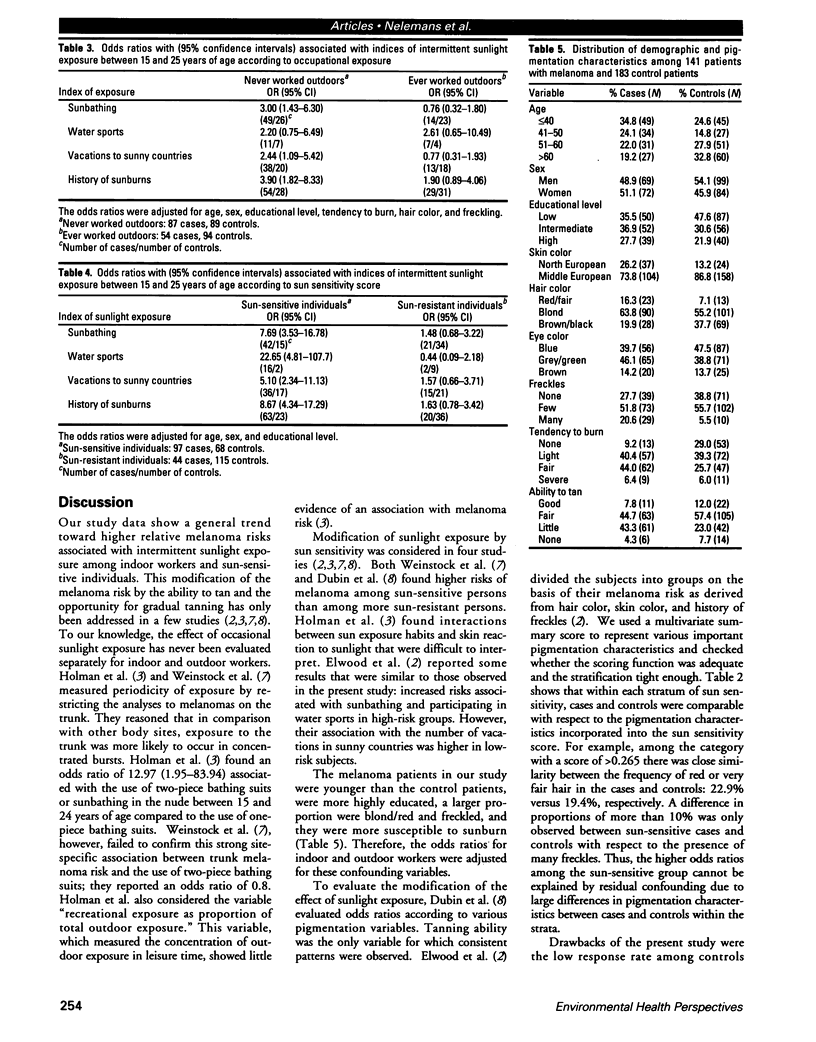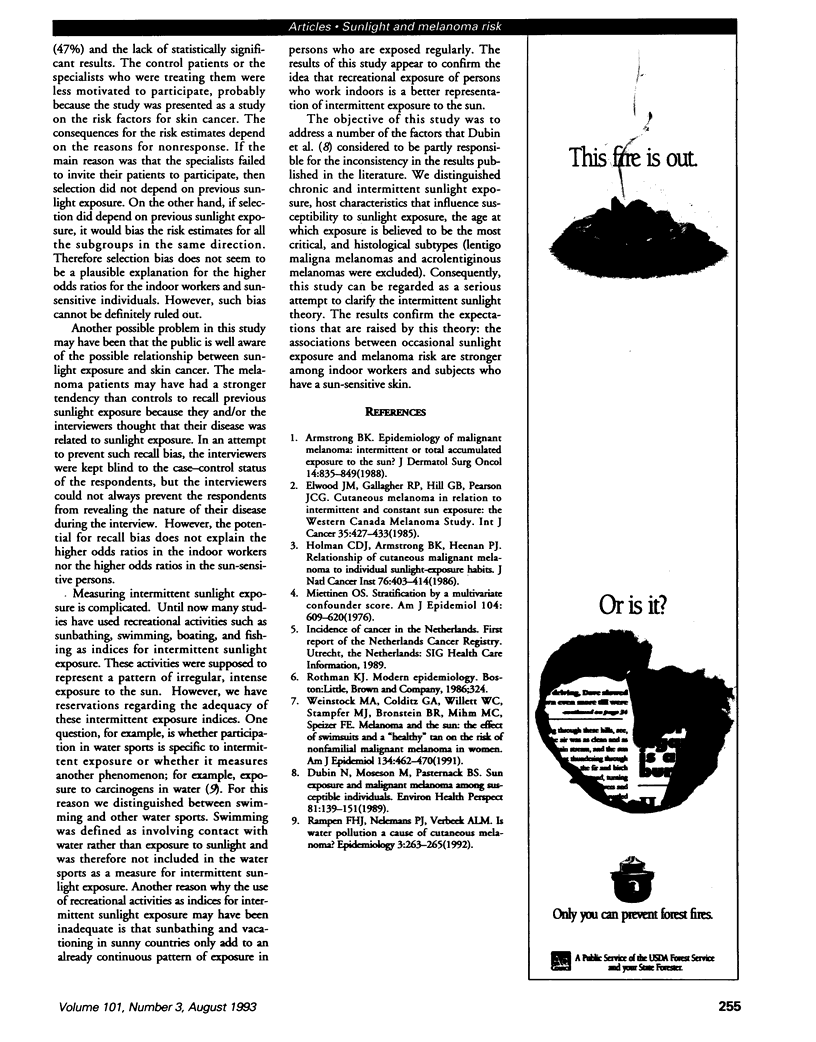Abstract
Intermittent exposure to sunlight is considered to be an important risk factor for melanoma, but the associations reported in most case-control studies are surprisingly weak. The aim of this study was to evaluate whether the incorporation of a subject's background exposure to the sun and pigmentation characteristics (which are assumed to influence a person's susceptibility to sunlight exposure) could produce stronger associations between sunlight exposure and the risk for melanoma. A population-based case-control study was performed in the mid-eastern part of the Netherlands. The study group comprised 141 patients with a histologically verified melanoma and 183 controls with other malignancies who were registered by the same cancer registry. Patients with a lentigo maligna melanoma or an acrolentiginous melanoma were excluded. Information was collected by interviews and physical examination. We categorized subjects as indoor or outdoor workers on the basis of occupational exposure to the sun. Pigmentation characteristics, which are known to be risk indicators for cutaneous melanoma, were summarized as one sun sensitivity score. We used this score to distinguish between sun-sensitive and sun-resistant persons. The odds ratios associated with sunbathing, vacations spent in sunny countries, and sunburns were higher among the indoor workers than among the outdoor workers. After stratification by the sun sensitivity score, the effect of sunbathing, participating in water sports (swimming excluded), vacations to sunny countries, and a history of sunburn was largest for the sun-sensitive persons. The data show a general trend toward higher relative risks among indoor workers and sun-sensitive individuals. The results of this study support the intermittent sunlight hypothesis.
Full text
PDF



Selected References
These references are in PubMed. This may not be the complete list of references from this article.
- Armstrong B. K. Epidemiology of malignant melanoma: intermittent or total accumulated exposure to the sun? J Dermatol Surg Oncol. 1988 Aug;14(8):835–849. doi: 10.1111/j.1524-4725.1988.tb03588.x. [DOI] [PubMed] [Google Scholar]
- Elwood J. M., Gallagher R. P., Hill G. B., Pearson J. C. Cutaneous melanoma in relation to intermittent and constant sun exposure--the Western Canada Melanoma Study. Int J Cancer. 1985 Apr 15;35(4):427–433. doi: 10.1002/ijc.2910350403. [DOI] [PubMed] [Google Scholar]
- Holman C. D., Armstrong B. K., Heenan P. J. Relationship of cutaneous malignant melanoma to individual sunlight-exposure habits. J Natl Cancer Inst. 1986 Mar;76(3):403–414. [PubMed] [Google Scholar]
- Miettinen O. S. Stratification by a multivariate confounder score. Am J Epidemiol. 1976 Dec;104(6):609–620. doi: 10.1093/oxfordjournals.aje.a112339. [DOI] [PubMed] [Google Scholar]
- Rampen F. H., Nelemans P. J., Verbeek A. L. Is water pollution a cause of cutaneous melanoma? Epidemiology. 1992 May;3(3):263–265. doi: 10.1097/00001648-199205000-00013. [DOI] [PubMed] [Google Scholar]
- Weinstock M. A., Colditz G. A., Willett W. C., Stampfer M. J., Bronstein B. R., Mihm M. C., Jr, Speizer F. E. Melanoma and the sun: the effect of swimsuits and a "healthy" tan on the risk of nonfamilial malignant melanoma in women. Am J Epidemiol. 1991 Sep 1;134(5):462–470. doi: 10.1093/oxfordjournals.aje.a116117. [DOI] [PubMed] [Google Scholar]


